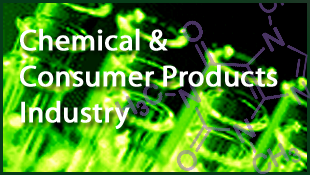Industries Served:
About MB Research
MB Research has served the testing needs of both government and industry since 1972.
Complete support services including consultation, protocol development, quality assurance, analytical chemistry and archive facilities are integral components of studies performed at MB.
Our technical and support procedures are in full compliance with OECD, FDA, and EPA.
For more information about our capabilities, please click here.![]()
In Vitro and Alternative Test Methods
NEW - Assays for In Vitro Sensitization
Genomic Allergen Rapid Detection System
- in vitro test method for dermal sensitization based on gene expression analysis of stimulated models of Dendritic cells
- GARDskin, GARDpotency, & GARDair
- Developed by SenzaGen
Direct Peptide Reactivity Assay (DPRA)
- Accepted in vitro assay for dermal sensitization screening by ECVAM
- Measures molecular reaction of specific peptides to possible sensitizers
- OECD 442C In-Chemico Skin Sensitization
In Vitro Sensitization Screening Assay (IVSA)
- Using the 3D Reconstructed Human Epidermis protocol currently under review by ECVAM
- Measures IL18 production in epidermal keratinocytes
Human Cell Line Activation Test (h-CLAT)
- Examines dendritic cell activation by quantifying changes in the expression of cell surface markers (CD86 and CD54) in the human leukemia cell line THP-1
- OECD 442E - In Vitro Sensitization Test
Ocular Irritation Assays
3D Human Ocular Tissue Equivalent Systems
MatTek EpiOcular™, SkinEthic corneocyte models
- These models mimic characteristics of the epithelium of the eye
- Unique properties of 3D models allow test articles to be applied topically, allowing testing of solids, organics, and insoluble materials
HET-CAM - Hen's Egg Test - Chorioallantoic Membrane (HET-CAM)
- Uses fertilized chicken eggs
- INVITTOX PROTOCOL Number 47
Bovine Corneal Opacity and Permeability Assay (BCOP)
- Uses excised bovine corneas normally discarded
- Measures two endpoints; 1) changes in opacity, reflecting protein denaturation and corneal injury, and 2) fluorescein permeability reflecting damage to corneal epithelium
- Optional histological endpoint is available (H & E staining)
- Measurement of pro-inflammatory mediators in liberated corneal cells (by flow cytometry or ELISA)
Porcine Cornea Reversibility Assay(PorCORA)
- Uses excised porcine cornea normally discarded
- Corneas maintained in culture for up to 21 Days
- Measures "Days to Recover" after exposure to possible Irritants
- Allows discrimination between Severe Irritant and Ocular Corrosive
Chorioallantoic Membrane Vascular Assay (CAMVA)
- Uses fertilized chicken eggs on embryonic day 10 or 14 of development
- Measures hemodynamic effects, injury, and anti-angiogenic effects to the membrane microvasculature
- Especially useful for alcohol-containing formulations
Replacement Ocular Battery(ROBatt)
- Uses tiered testing strategy of alternative ocular irritation assays (CAMVA, BCOP, PorCORA, PorFocal) to determine regulatory classification of a test material without the use of live animals.
- Currently Under Development
Keratinocyte/Fibroblast Viability Assay (Neutral Red or MTT)
MB Research uses normal human primary epidermal keratinocytes or fibroblasts (or mouse keratinocytes and fibroblasts)- Cells are representative of the eye and skin epithelium
- Human cells are derived from neonatal, adolescent, or aged donors
- Cytokine expression or release (LDH, PGE-2, interleukins) can be measured
- Low serum or serum free protocol options are available
Keratinocyte Proliferation (turnover) Assay
- Using primary human cell or mouse cell lines in serum-free or low serum media
- Rate of proliferation or apoptosis is measured by vital dye uptake (MTT or neutral red) or by BrdU incorporation and flow cytometry
Dermal Irritation Assays
3D Human Skin Equivalent Systems
The 3D models available at MB Research (MatTek EpiDerm™, SkinEthic systems and CellSystems EpiCS®) allow the application of the test material directly to the "skin" surface and permit the assessment of dermal toxicity via a wide variety of parameters.
- Cytotoxicity via MTT, neutral red viability assay, or flow cytometry
- Histological examination (H & E) of the epidermal layers, including the stratum corneum
- Measurement of inflammatory mediator and lytokine release (PGE-2, nitric oxide, TNFa, IL1a, and other interleukins)
- Dissolution of the tissue equivalent into a single cell suspension, with subsequent flow cytometric analysis allows evaluation of gene expression and peroxide production (antioxidant status of cells)
Dermal Corrosivity Assays
Corrositex™
- An accepted alternative to the Draize rabbit corrosivity test that recently has been validated by ICCVAM for use for DOT, FHSA, CPSC, EPA and FDA testing
- Allows Packing Group assignment of test materials
- Can be used to compare the relative corrosivity of materials within
Packing Groups for product development purposes. See www.corrositex.com for more information.
MatTek EpiDerm™ Corrosivity Test
- Validated by ECVAM and ICCVAM as an in vitro alternative corrosivity test based on human skin cells
- Allows testing of material not compatible with Corrositex™
Phototoxicity Assays
- With 3T3 mouse fibroblast cells via the EC/COLIPA validated protocol. See www.3t3nru.com for more information.
- Using the MatTek EpiDerm™ protocol currently under review by ECVAM
- Human keratinocytes or fibroblasts
MB Research also performs other in vitro and alternative assays. Please refer to our Capabilities List![]() or feel free to contact a Client Services Representative for assistance.
or feel free to contact a Client Services Representative for assistance.


